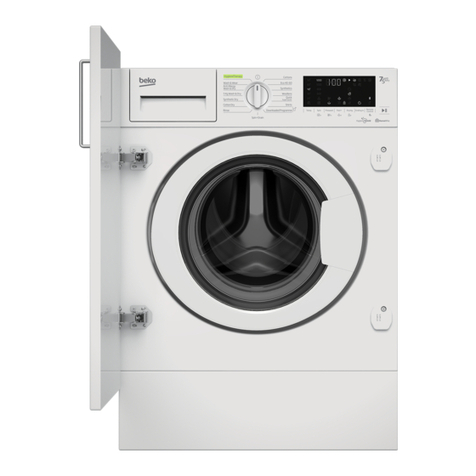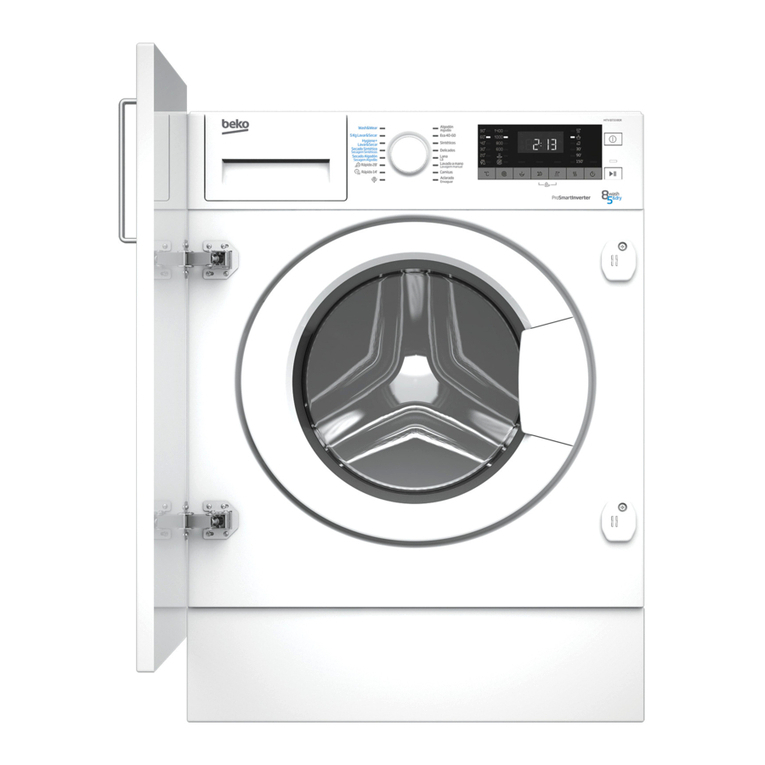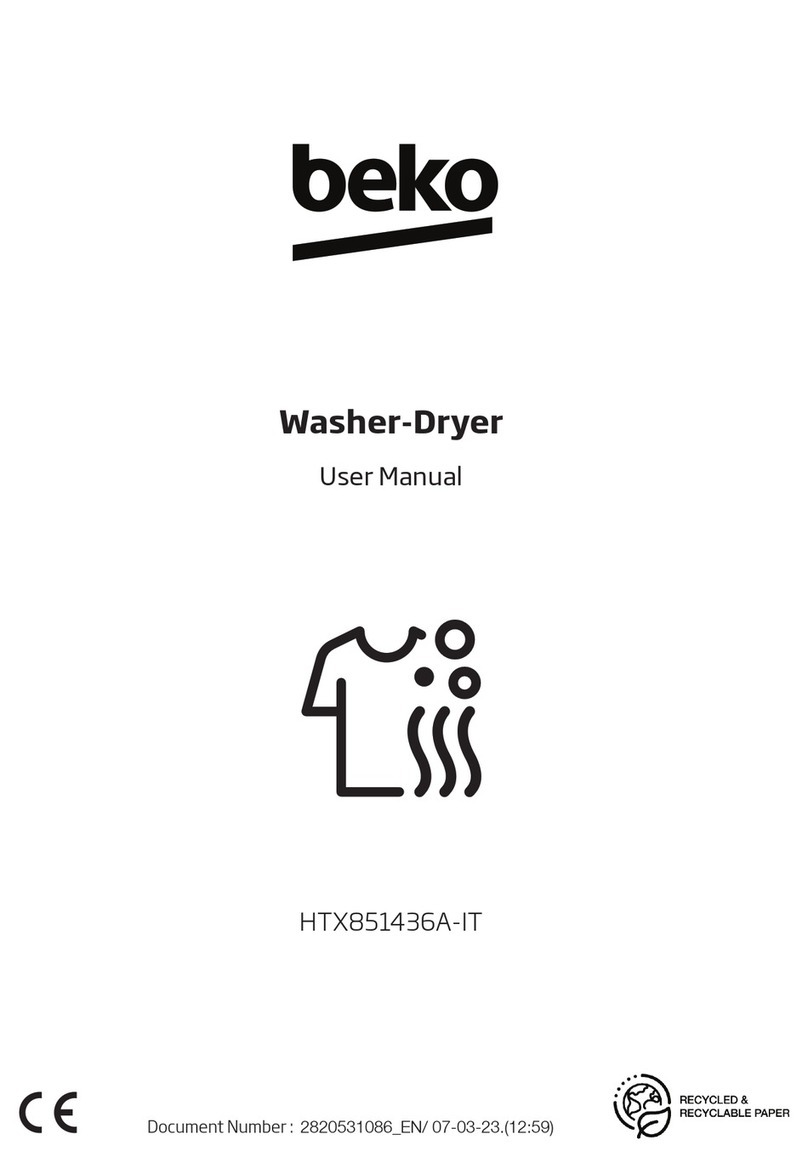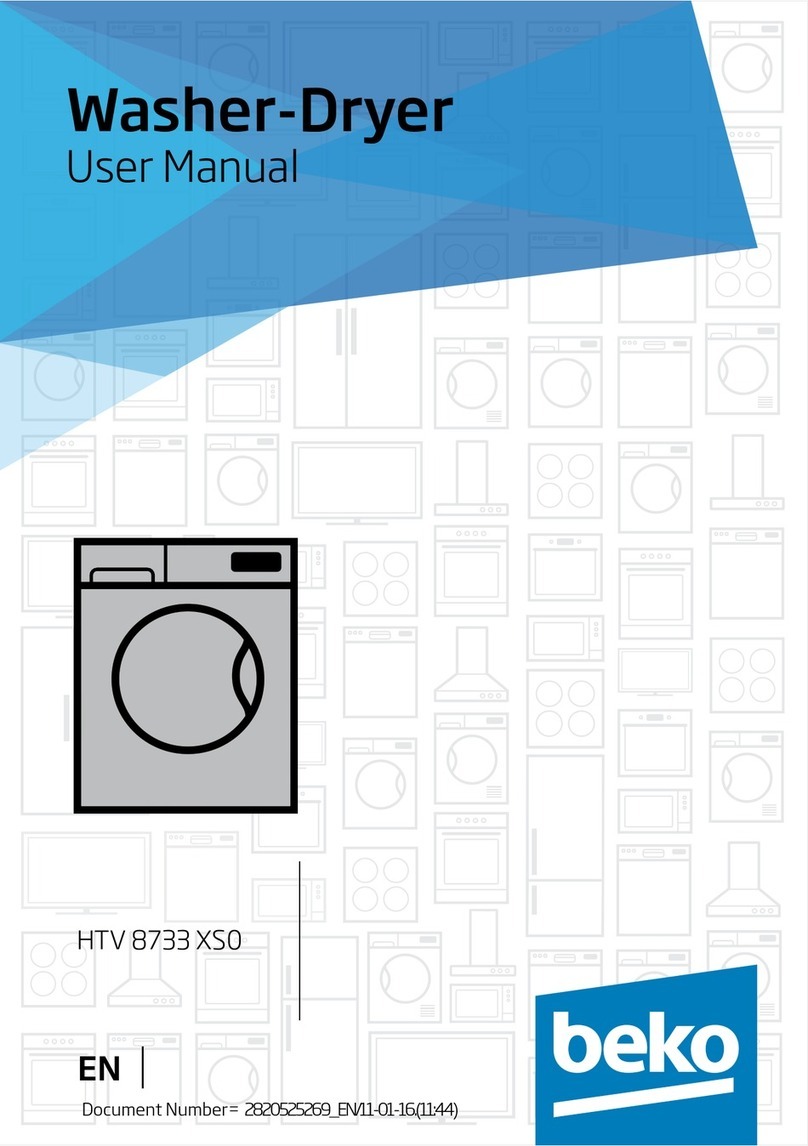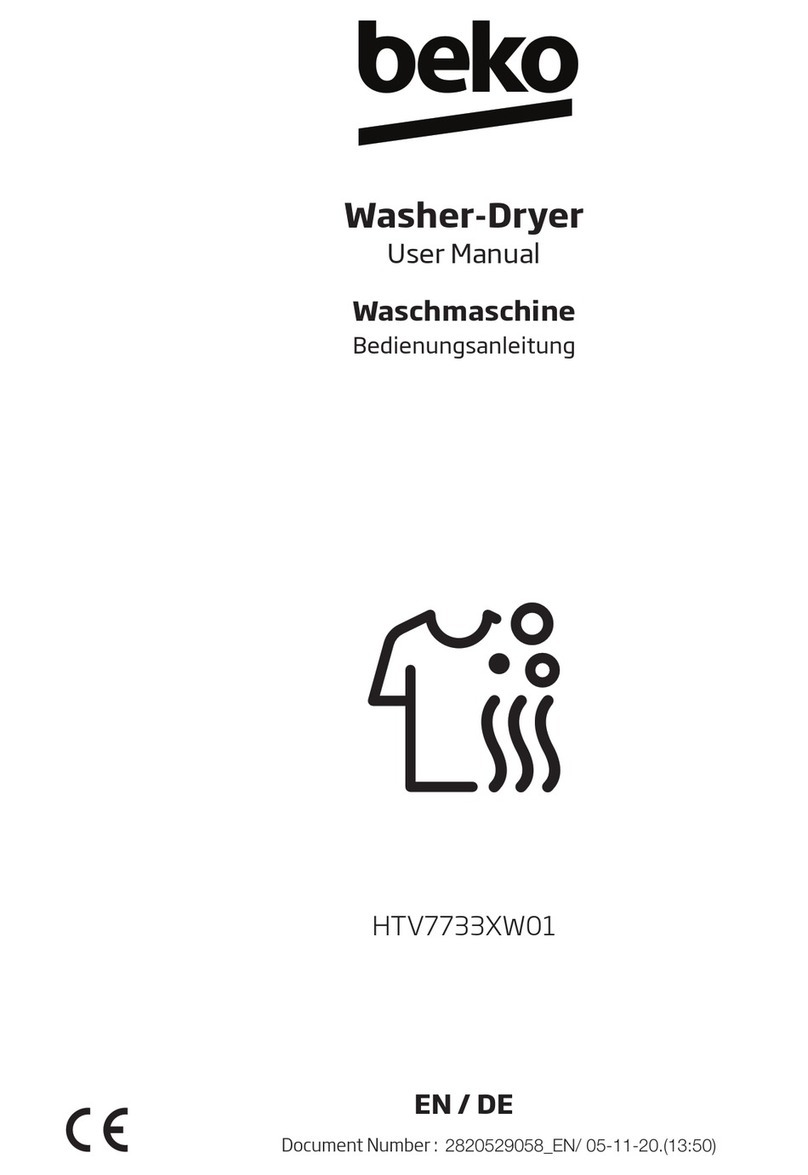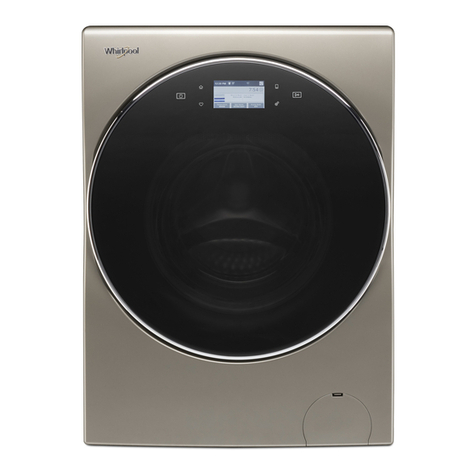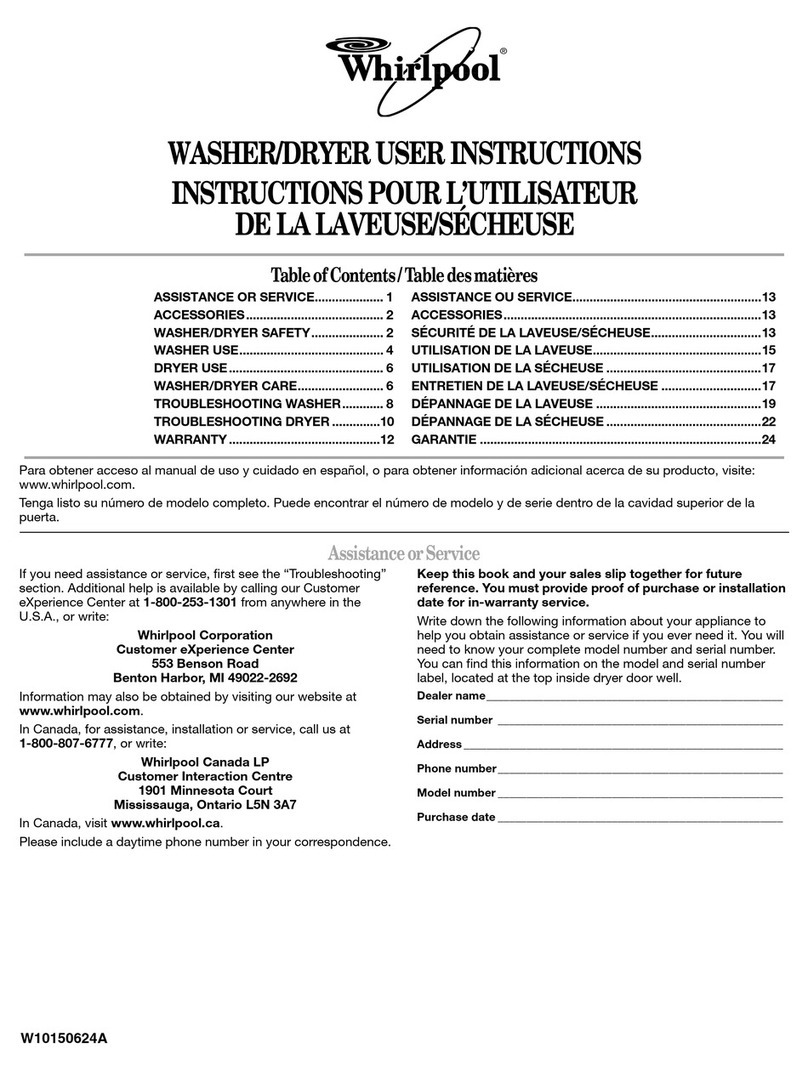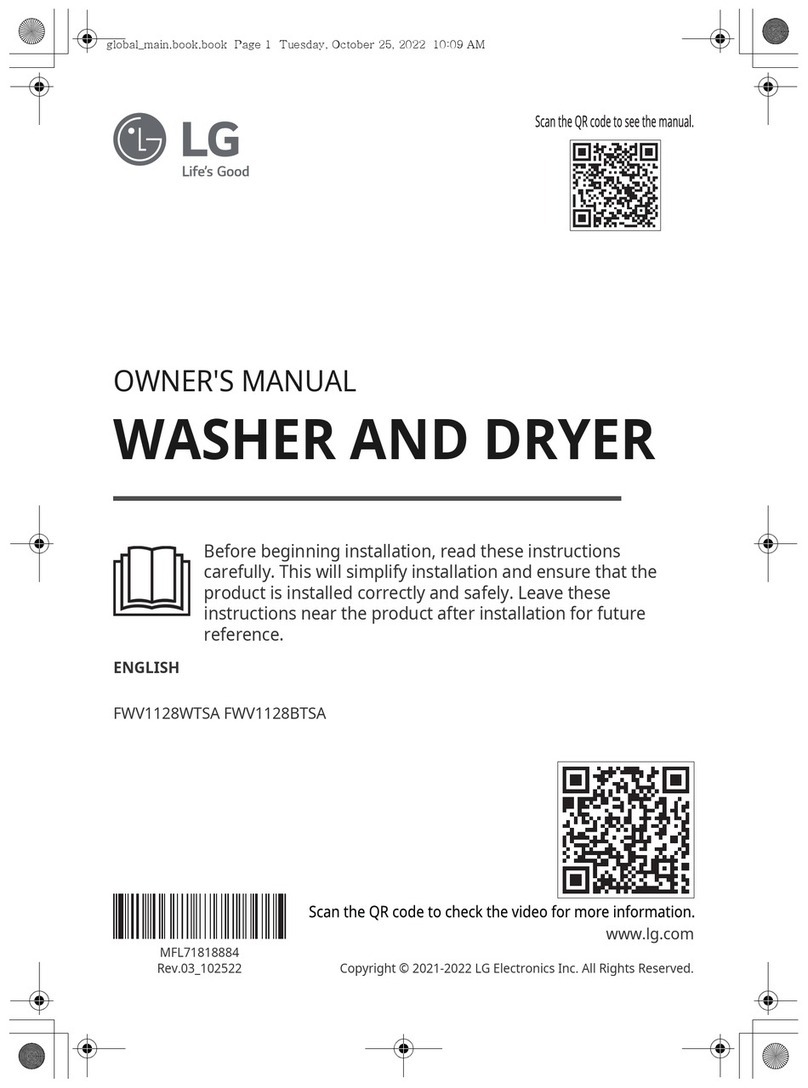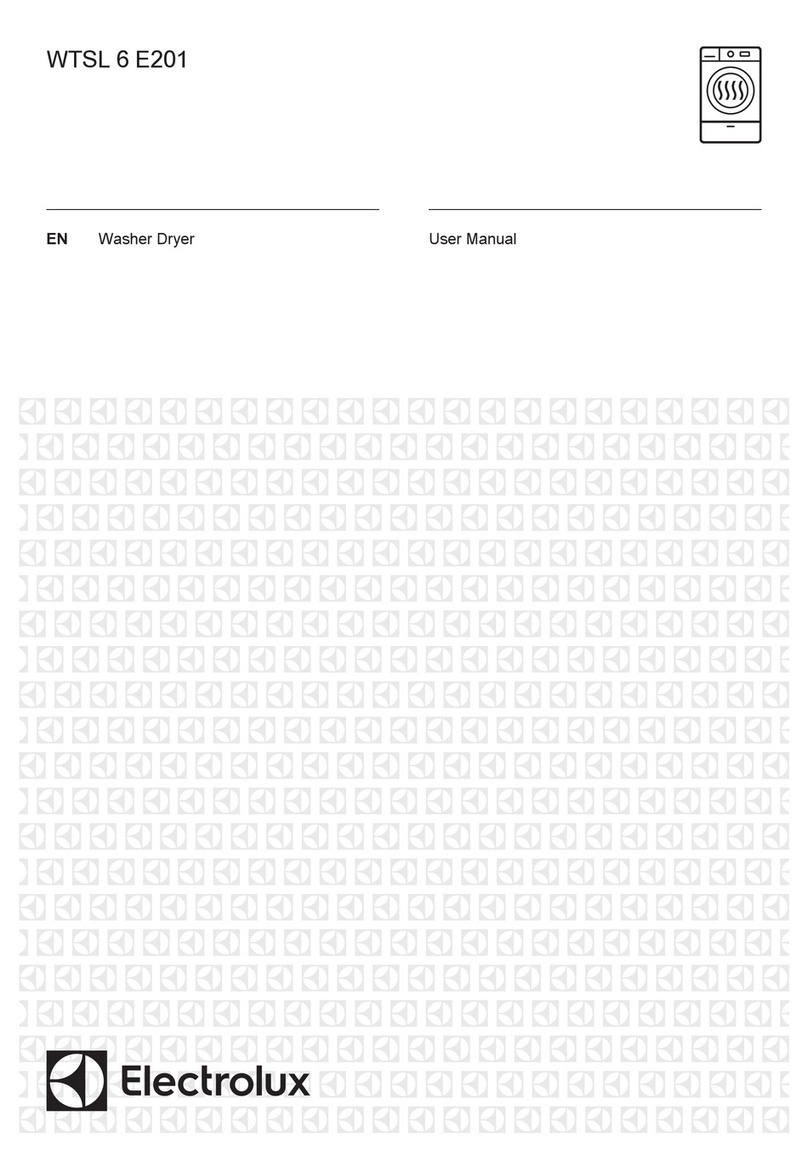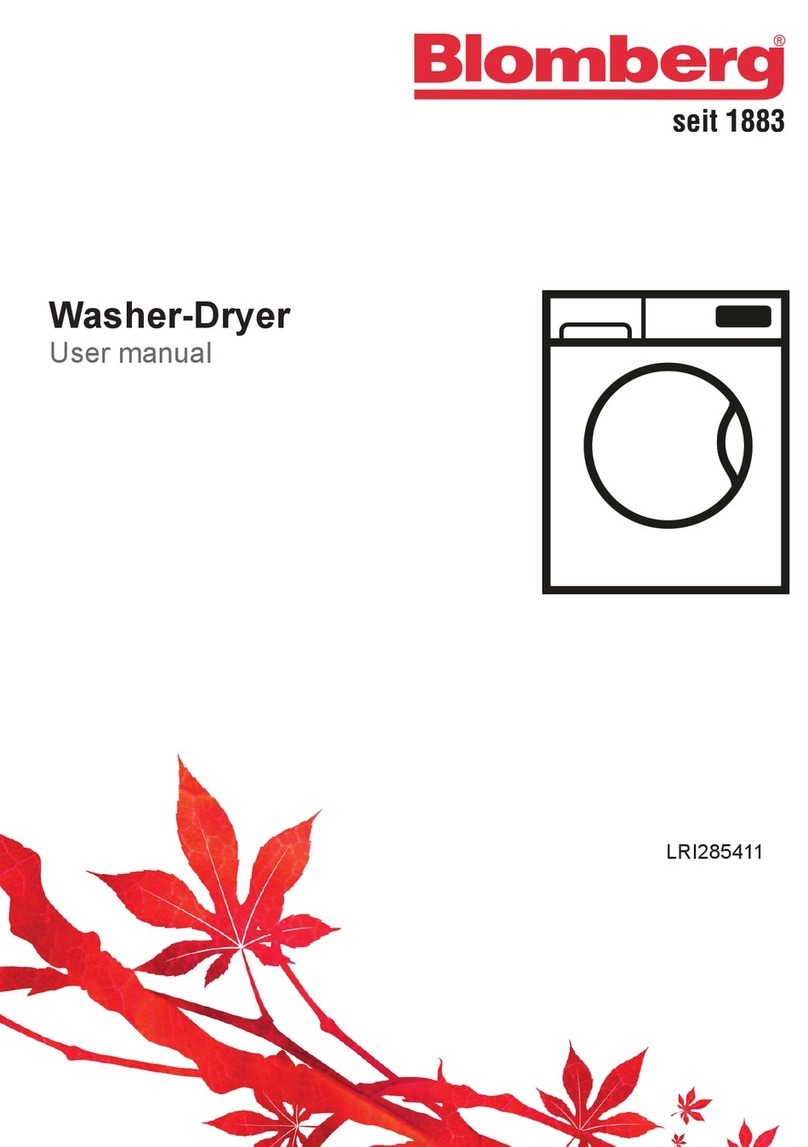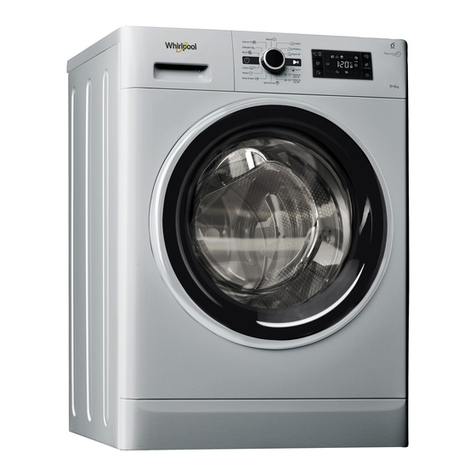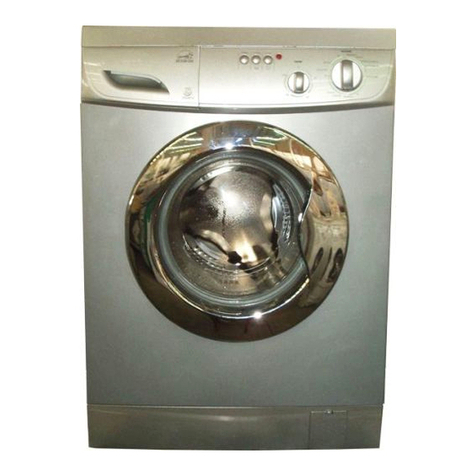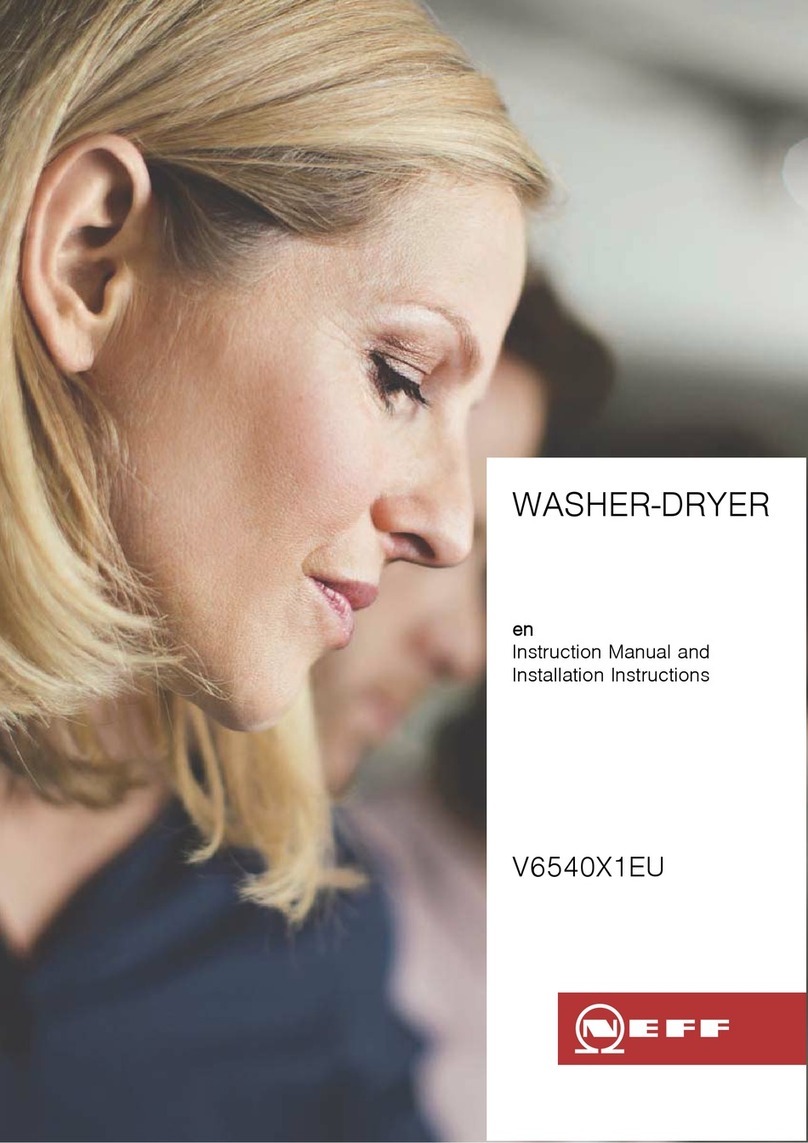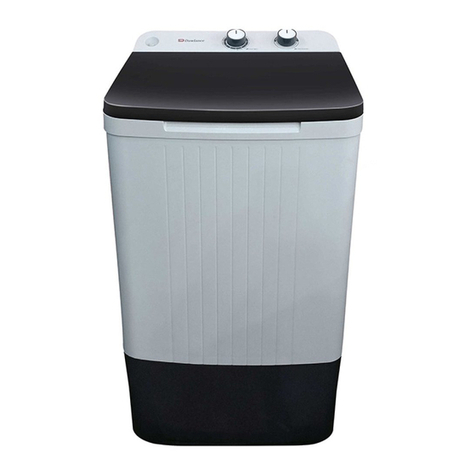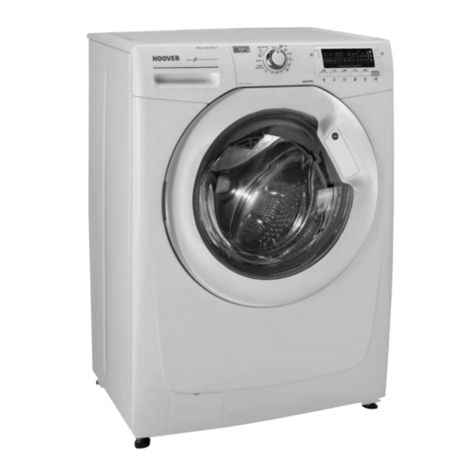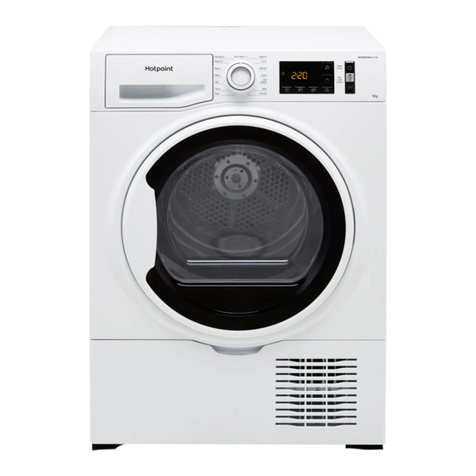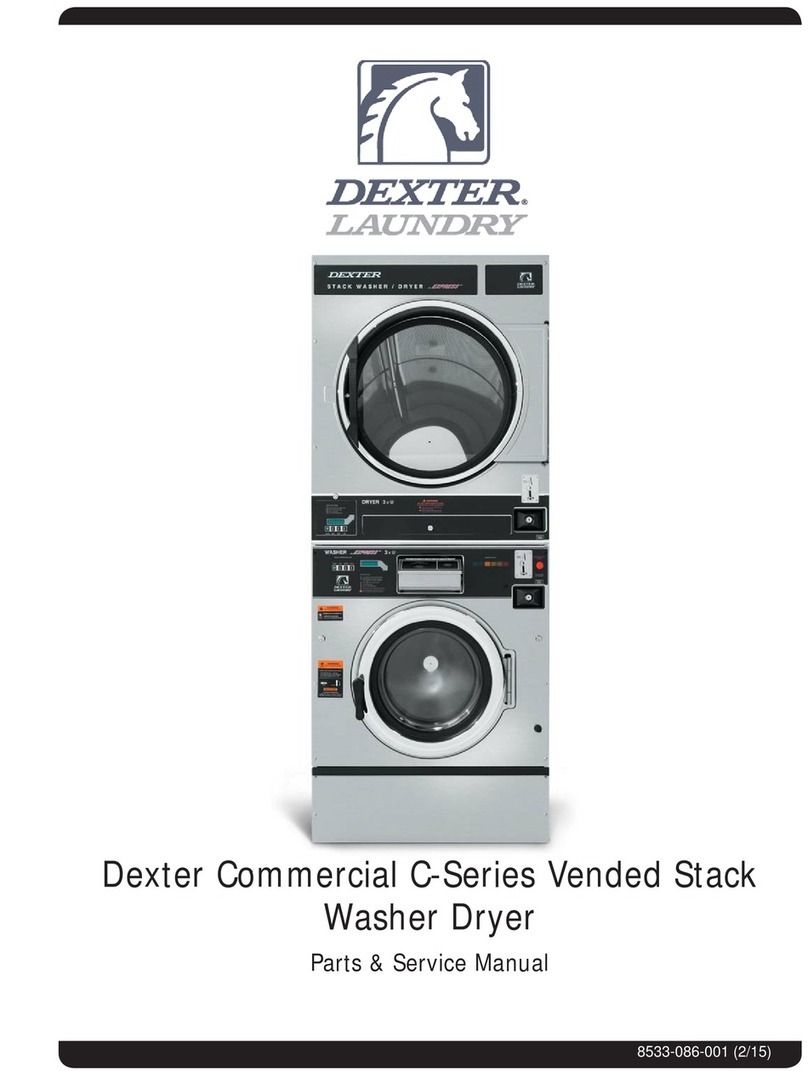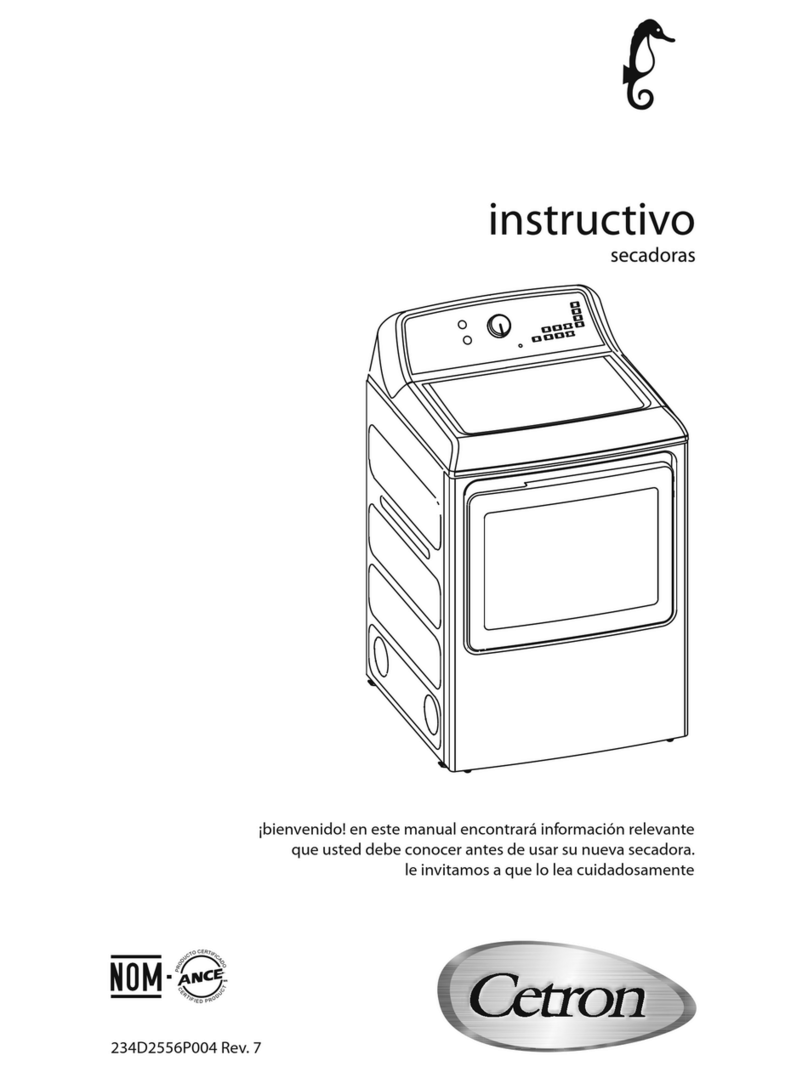
5 / EN Washer-Dryer / User’s Manual
C
INFORMATION
• Do not install or leave the product in
places where it might be exposed to
outdoor conditions.
• Do not play with control elements of
the product.
• If a non-self-resetting thermal cut-out
is required in order to comply with
the standard then the instructions for
appliances incorporating a non-self-
resetting thermal cutout that is reset
by disconnection of the supply mains
shall contain the substance of the
following:
CAUTION:
In order to avoid a hazard
due to inadvertent resetting of the
thermal cut-out, this appliance must
not be supplied through an external
switching device, such as a timer, or
connected to a circuit that is regularly
switched on and off by the utility.
1.1.3 Warnings about drying
DANGER!
• Laundry that has previously been
washed, cleaned, soiled or stained
with petrol/gas, dry cleaning solvents
or other inflammable/combustive
substances must not be dried in the
machine since they emit inflammable/
combustive vapour. Otherwise, there
will be the risk of fire.
• Laundry soiled with vegetable
oil, alcohol, petrol, gas oil, stain
remover, turpentine, wax or wax
remover must be washed with
hot water and a great amount of
detergent before drying. Otherwise,
there will be the risk of fire.
DANGER!
• Rubber (latex) foam, shower caps,
waterproof fabrics, clothes and
rubber-reinforced/rubber-foam
pillows must not be dried with the
drying function. Otherwise, there will
be the risk of fire.
• If you use laundry balls, measuring
scoops or laundry cage in your
machine, these products might melt
during the drying process. If you are
going to select the drying function, do
not use these products. Otherwise,
there will be the risk of fire.
• If you are using industrial chemicals
for cleaning, do not use the drying
function. Otherwise, there will be the
risk of fire.
B
DANGER!
• Do not touch the glass of the
loading door with bare hands after
drying. There is the risk of burning.
• There is a final step, which is
cooling, to keep the laundry at a
certain temperature to ensure that
it is not damaged. You may be
exposed to hot steam if you open
the door before cooling is complete.
There is the risk of scalding.
• If the drying programmes are
interrupted (due to programme
cancellation or power failure), the
laundry in the machine might be
hot. Be careful.

